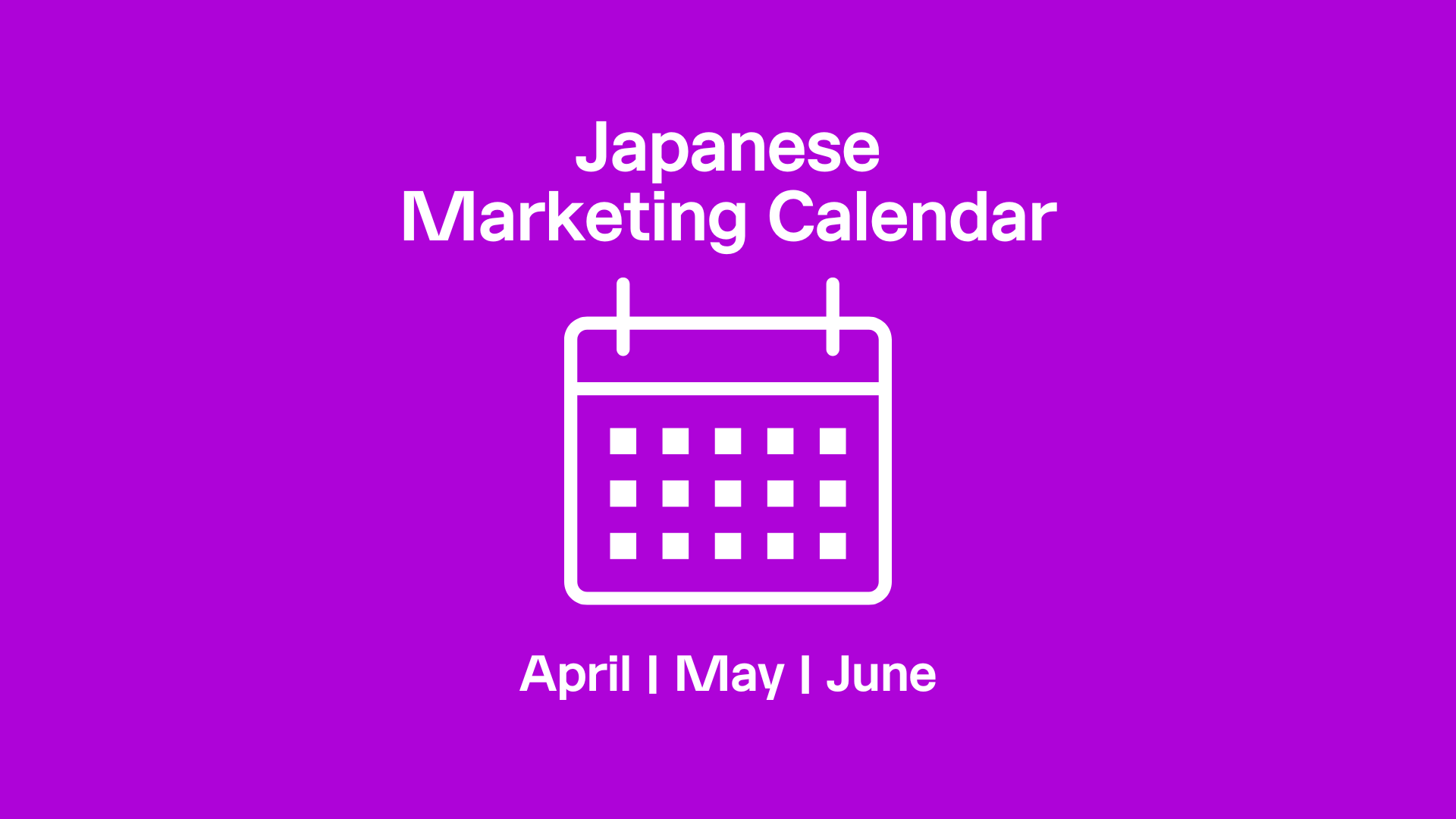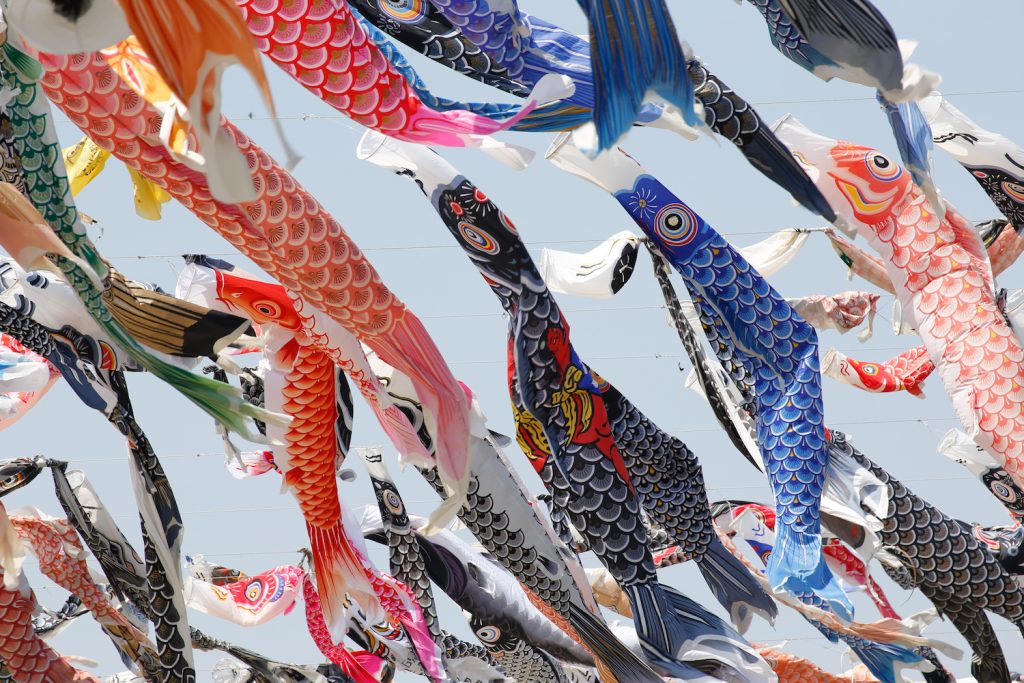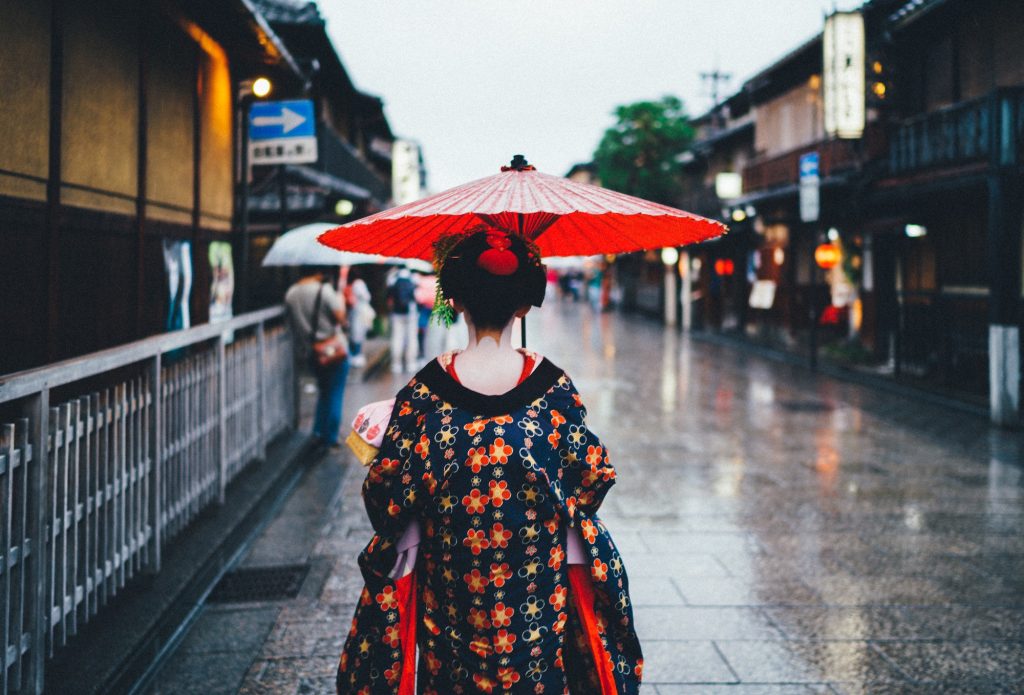Insights >
2024 spring marketing calendar in Japan | April, May, June


New: 2024 Japanese Consumer Behaviour | Whitepaper | download for FREE >>


Japan is well known for its unique culture and customs, reflected in its typical marketing calendar. In this article, we look at Q2 in Japan. Read about major events you should include in your 2024 marketing calendar.

Want to learn more?
Read our articles on marketing calendars for the rest of the year, and craft a perfect 2024 marketing calendar:
April marks the start of the new fiscal year in Japan.
Many companies launch new products or services to coincide with this. It’s a good opportunity to promote new products and services. Especially those that can help people start the new year positively.
Additionally, April is the start of the school year. Many products and services for education, like textbooks and school uniforms, are getting a lot of attention.
Another notable event in April is Showa Day – a national holiday celebrating the former Emperor Showa’s birthday on 29 April. This is a day to reflect on the Showa era and its historical importance.
It is an opportunity for companies to engage in activities that align with this theme. Many retailers organise sales promotions or advertising campaigns.
The Sakura Phenomenon
The cherry blossom, or sakura in Japanese, is a beloved symbol of spring in Japan.
And it is a must in every successful 2024 marketing calendar. Every year, the arrival of cherry blossoms marks the beginning of a new season. It is when many people head outside to enjoy the beauty of the pink and white flowers. It allows marketers to connect with the public using the sakura trend to create effective campaigns.
Another way for companies to take advantage of the sakura season is by hosting events or campaigns that are related to cherry blossoms. Cherry blossom viewing parties or sakura-themed photography competitions are common during this time. These events can be a great way to create a sense of community and generate positive buzz for a brand.
Social media campaigns are also a great way to tap into the sakura season. Companies use hashtags related to cherry blossoms and encourage customers to share their sakura-themed photos or experiences. This way, brands create a sense of connection with their fanbase.
However, there are specific cultural and social sensitivities to be aware of when marketing during the cherry blossom season. Cherry blossoms have deep cultural significance in Japan. It’s essential to approach the subject matter with respect and sensitivity.
Popular keywords:
• 新学期 (shin gakki) – ‘new school term’
• 昭和の日 (Showa no hi) – ‘Showa Day’
• 引っ越し (hikkoshi) – ‘moving’ as it’s common for people to move at the start of the new fiscal year
• カーデニング (gardening)
• 名刺入れ (meishi-ire) – ‘business card holder’ as many people change jobs at the start of the new fiscal year
May is a month of celebrations in Japan.
It is the time for several traditional festivals known as Golden Week. It is a collection of 4 national holidays in a row. Starting with Showa Day (29 April), the consecutive holidays are Constitution Day (3 May), Greenery Day (4 May), and Children’s Day (5 May).
Preparing a well-designed 2024 marketing calendar for the Golden Week is a great strategy.

Many Japanese people take advantage of the long holiday to travel. This makes Golden Week one of the busiest travel seasons in Japan.
Companies and brands can leverage this season by offering travel deals or special promotions related to tourism. This includes airline tickets, hotel bookings, or guided tours. The travel industry profits during this time by offering special deals or discounts to attract customers planning to travel during Golden Week.
Travel gadgets, such as portable electronics, comfortable clothing, and lightweight luggage, are also gaining popularity.
Another way for companies to increase their sales during this period is by promoting products or services that are well-suited to leisure activities. This includes outdoor gear, consumer electronics, or entertainment.
For example, a clothing company might release a line of clothing that is perfect for outdoor activities. A video game company might release a new title perfect for playing during the long holiday.
It’s important to note that Golden Week is very busy in Japan. Many places will be crowded. This could be both a challenge and an opportunity for businesses.
It may be challenging for companies to stand out among the competition. However, it also represents a vast potential market to reach.
Popular keywords:
• ゴールデンウィーク (Golden Week)
• 旅行 (ryokō) – ‘travel’
• プレゼント (purezento) – ‘gift’
• 新婚旅行 (shinkon ryokō) – ‘honeymoon’
• 母の日 (Haha no Hi) – ‘Mother’s Day’
June is the start of Japan’s rainy season, known as tsuyu.
It lasts about a month and a half, and people tend to stay indoors more during this time. This could be a good opportunity for companies to promote indoor activities or products. Those include board games, home workout equipment, or streaming services.
Extreme humidity may harm the travel industry, as people usually avoid getting on crowded trains and buses.

In literal translation, the two characters composing the phrase ‘rainy season’, 梅雨, mean ‘plum rain’.
Around this time, plum trees start bearing fruit, and people prepare things such as umeshu (plum wine) and umeboshi (pickled plums). Watching the raindrops while sipping a glass of plum wine is not that bad.
Additionally, June is a popular month for weddings in Japan. Many companies offer special deals on wedding-related products and services. Those include bridal gowns, wedding photography, and honeymoon packages.
The idea of June being the best month to get married developed in Japan in the 1950s. People started watching American films like ‘June Bride’, and ‘Seven Brides for Seven Brothers’.
To be a June Bride became a dream for many. Getting married in June is a good luck charm for a long, happy marriage.
But there is more – June is a low travel season due to the weather conditions. Hotels and banquet halls are free from tourists and other celebrations at this time. International travel to exotic wedding locations in Hawaii and Europe can also be less expensive.
In June, flowers bloom in Japan so couples can take wedding photos in beautiful natural settings on a sunny day.
Popular keywords:
• 梅雨 (tsuyu) – ‘rainy season’
• インドア (indoa) – ‘indoors’
• 結婚 (kekkon) – ‘wedding’
• 結婚式 (kekkonshiki) – ‘wedding ceremony’
• 日焼け止め (hiyakedome) – ‘sunscreen’
April, May, and June offer a variety of opportunities for companies to create effective marketing campaigns in Japan. Understanding the cultural context of these months is key to success.
You can boost your products’ visibility and engage with Japanese consumers by tying your campaigns to events, holidays, and seasons. This can help you connect with them in a more meaningful way. By aligning your promotions with specific occasions, you can increase the impact of your marketing efforts. This approach can also make your products more relevant and appealing to the Japanese market.
It’s important to note that Japan is a very seasonally-oriented country. It’s crucial to be aware of the cultural and social sensitivities. Using Japanese keywords in your advertising and marketing campaigns and any SEO efforts can help increase the visibility of your products or services in Japan.

At DMFA, our bilingual team of digital marketing experts is here to help you create a perfect marketing calendar.
Simply fill in the form and our team will get back to you as soon as possible →